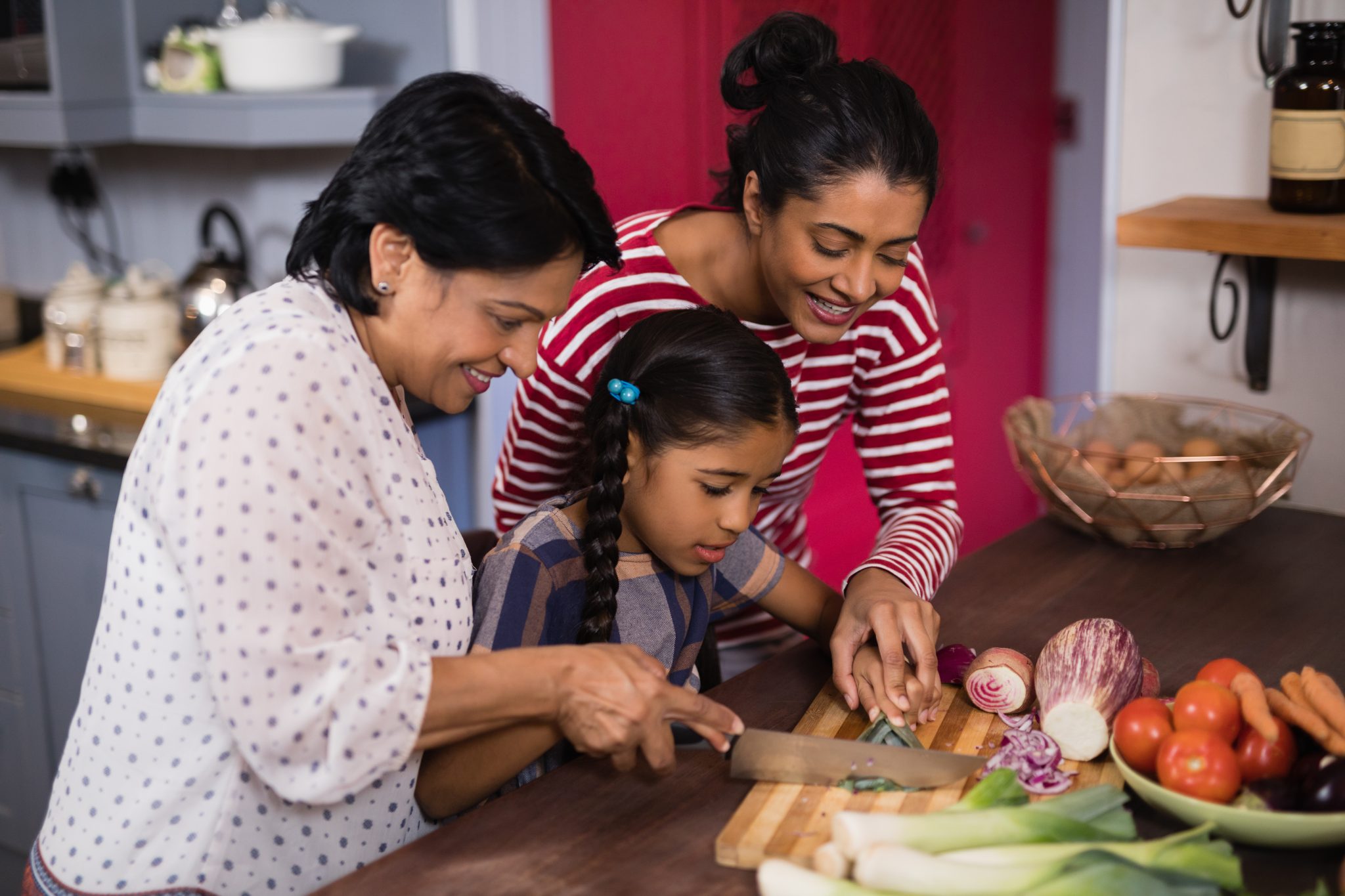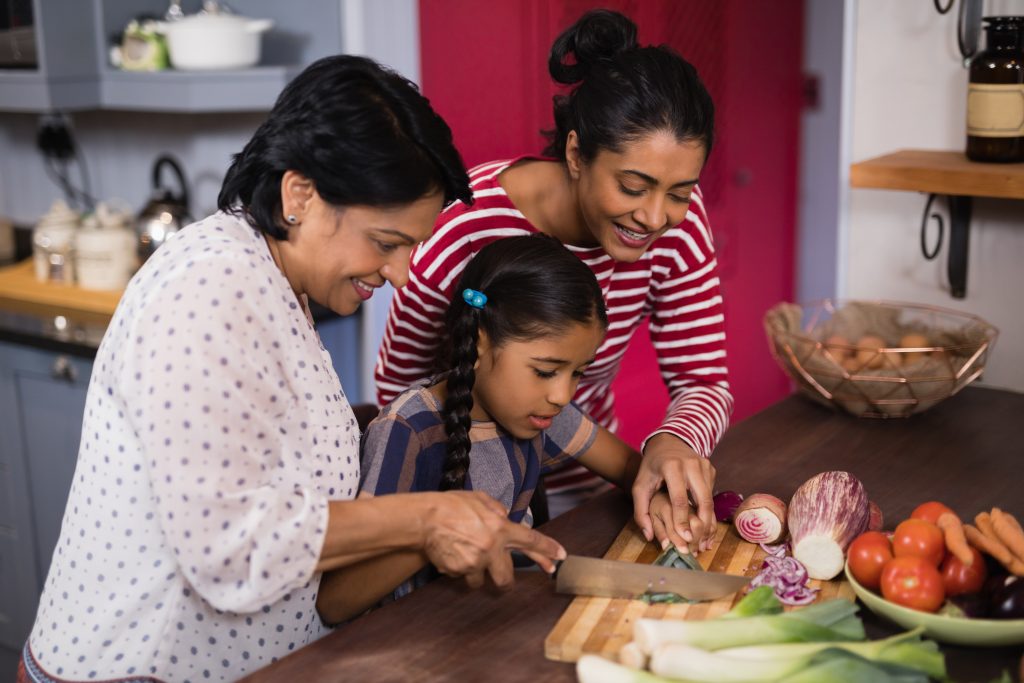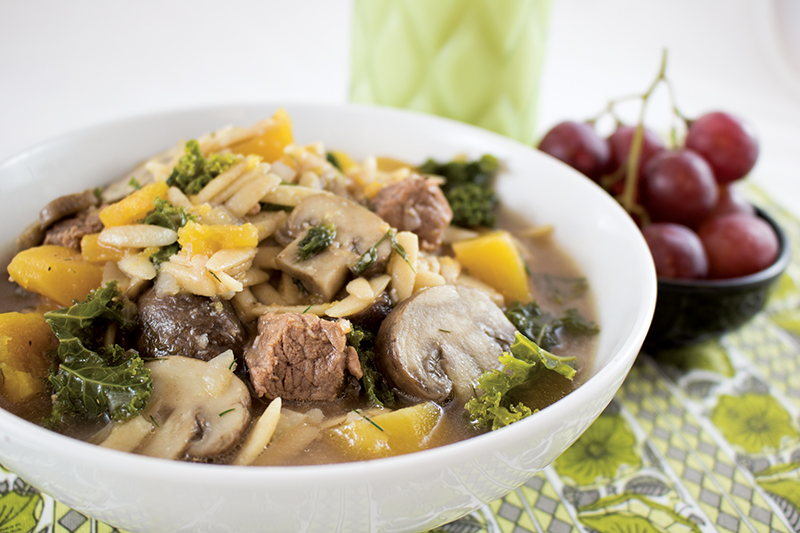
Basics for Cooking – Knife Skills
Knife skills are an important part of basic cooking. Learning how to handle a knife and make different cuts will open up more options for your meals. This post will cover the types of cuts typically found in recipes and how to safely work with a knife to make those cuts.

Types of Cuts
Recipes call for different cuts for meat, vegetables, and fruits based on the kind of meal and how it is prepared. A soup might include diced onions and chopped vegetables. A sauce sometimes lists minced herbs and garlic for flavor. How big the ingredients are cut also can determine how long they need to cook. A bigger chunk of potato takes longer to cook than a small cube.
Here is a list of some of the cuts you might find in recipes:
- Basic Cuts
- Diced or Chopped – small pieces about ¼ to ½ inch in size (onions, peppers, tomatoes)
- Minced – very tiny pieces (garlic, onions)
- Cubed – chunks 1 to 2 inches in size (meat, potatoes, squash, carrots)
- Sliced – ⅛ to ½ inch thick slices (potatoes, carrots, tomatoes, cucumber, zucchini)
- Fancy cuts
- Julienne – long, thin sticks about ⅛ inch thick (carrots, zucchini, potatoes)
- Chiffonade – ribbons (usually used with herbs for garnish)
Making the Cuts
Once the type of cut is determined, knowing how to hold and handle the knife correctly will make cutting safe and efficient. Follow these steps to get the right cut every time.
Basic steps for using knives in the kitchen:
- Secure your cutting board on the counter by either
- Placing a damp paper towel under your cutting board
or
- Buying a board with non-slip grip(s)
- Hold your knife with the base of the blade between your first finger and thumb. Wrap the rest of your fingers around the handle.
- To make a round item easier and safer to cut (examples: potatoes, onions), create a flat side by cutting it in half while holding it from above with your non-knife hand. Your knife will be under your non-knife hand. Place the flat side down to make your other cuts.
- Make a “claw” with your other hand to hold the item you are cutting. Try not lay your hand flat on the cutting board to avoid cutting your fingers.
- Use a rocking motion from tip to base pushing the blade down and away from you when cutting into an item.
Some of ONIE’s recipes involve different types of cuts. Try your new knife skills out on these recipes:
Creole Chicken and Okra calls for chopped onion, minced garlic, diced chicken, sliced okra, and chopped bell pepper.
Harvest Butternut and Beef Stew calls for diced onion, cubed beef stew meat, diced butternut squash, sliced mushrooms, and chopped kale.
Summer Cucumber Dill Salad calls for thinly sliced cucumber, halved grape tomatoes, and minced fresh dill.

Summary
Basic knife skills are needed to make most recipes. Knowing the cut you need and how to make it can help ensure your success in making a meal. Check out the attached video for more details on basic knife skills.


